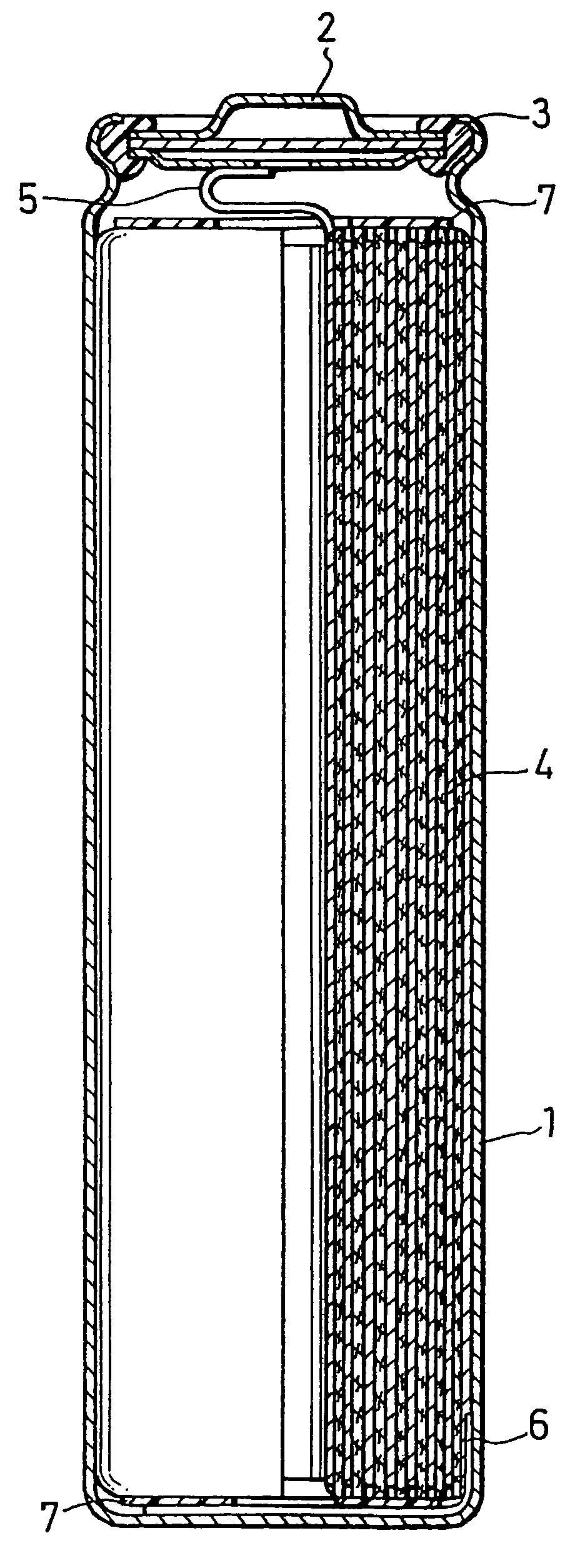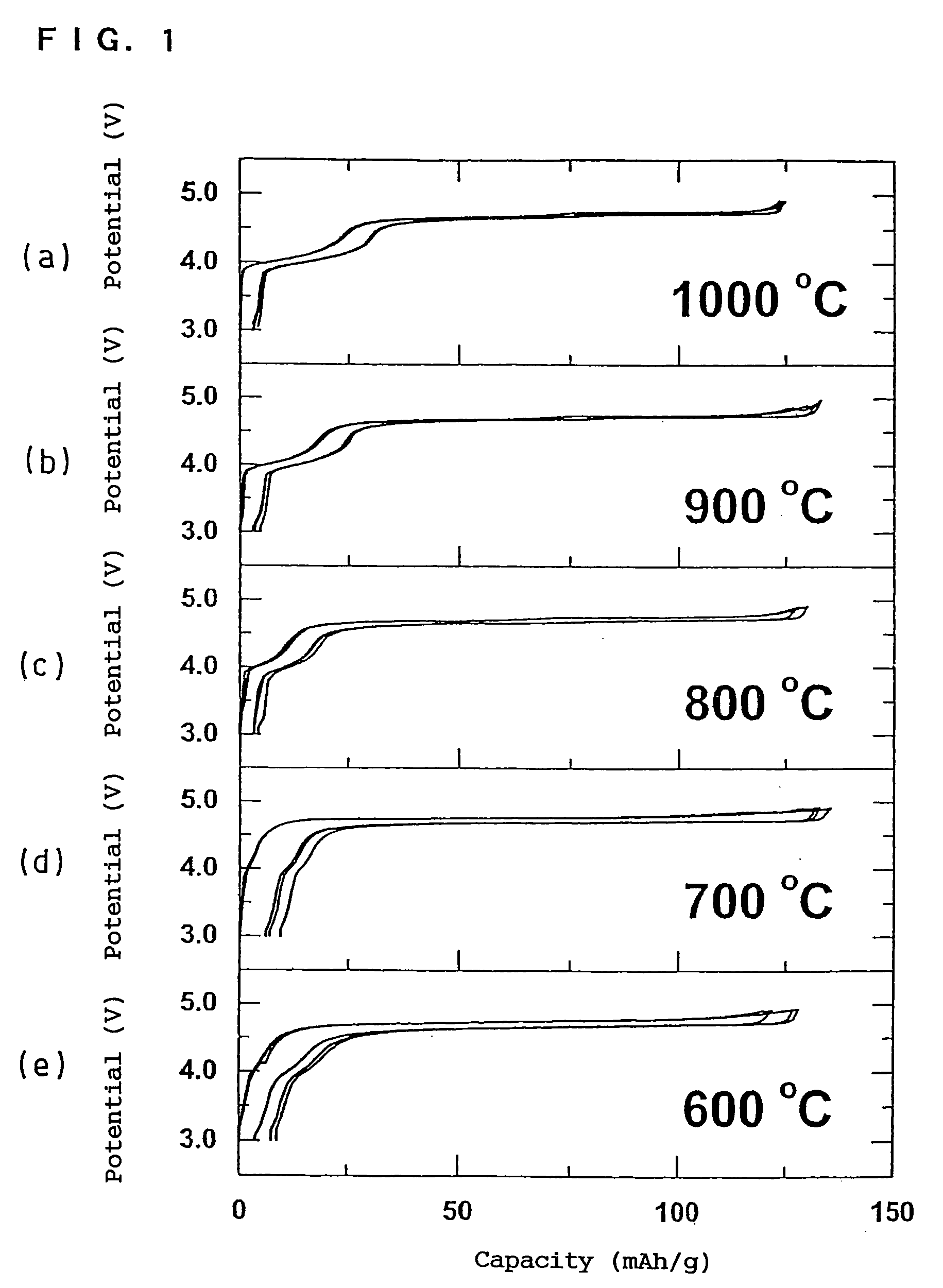Anode active material, manufacturing method thereof, and non-aqueous electrolyte secondary battery
- Summary
- Abstract
- Description
- Claims
- Application Information
AI Technical Summary
Benefits of technology
Problems solved by technology
Method used
Image
Examples
experiment 1
[0254] Three different types of positive electrode active material samples were prepared under the synthesis conditions shown in the above section (3). A mixture obtained by thoroughly mixing [Ni1 / 4Mn3 / 4](OH)2 obtained through a eutectic reaction and LiOH.H2O was formed into pellets, which was then baked to give a positive electrode active material. Accordingly, the composition of the obtained positive electrode active material was Li[Ni1 / 2Mn3 / 2]O4. The amount of oxygen was changed according to the synthesis condition. The electrochemical analysis of the obtained positive electrode active materials was performed in the manner shown in the above section (1).
(i) PRODUCTION EXAMPLE 1
[0255] The ambient temperature was increased from room temperature to 1000° C. for about 3 hours, maintained at 1000° C. for 12 hours and then decreased from 10000° C. to room temperature for 2 hours.
(ii) PRODUCTION EXAMPLE 1
[0256] The ambient temperature was increased from room temperature to 10000° C....
production example 1
(iii) PRODUCTION EXAMPLE 1
[0257] The ambient temperature was increased from room temperature to 1000° C. for about 3 hours, maintained at 1000° C. for 12 hours and rapidly cooled from 1000° C. to room temperature. Then, the ambient temperature was increased to 7000° C. for about 1 hour, maintained at 7000° C. for 48 hours and decreased from 7000° C. to room temperature for 1.5 hours.
[0258] The electrochemical behaviors of the positive electrode active materials obtained in Production Examples 1 to 3 are shown as (a) to (c) in FIG. 22. Form FIG. 22, it is understood that all of the positive electrode active materials show small polarization and a flat charge / discharge curve. The positive electrode active material (a) of Production Example 1 exhibits a voltage difference at the end of discharging, which can be utilized for the detection of the remaining capacity. The difference is as small as only several V, so that the effective detection of remaining capacity can be achieved withou...
experiment 2
[0261] A 3V level battery was produced using the positive electrode active material in accordance with the present invention in the positive electrode and a negative electrode active material Li4Ti5O12(Li[Li1 / 3Ti5 / 3]O4) in the negative electrode. The negative and positive electrode plates were produced in the same manner, using the same compound ratio. As the separator, a 25 μm non-woven fabric made of polybutylene terephthalate was used. The electrode area was set to 3 cm2. As the electrolyte, an organic electrolyte solution prepared by dissolving 1 mol of LiPF6 in a solvent mixture of EC and DEC in a ratio of 3:7 was used. The positive electrode active material used here was the one obtained in the above-mentioned Case 3.
[0262]FIG. 23 shows the discharge behavior of this battery system, and FIG. 24 shows the high rate characteristics of the same. FIGS. 23 and 24 illustrate that the battery system of the present invention is a 3V level battery with excellent polarization character...
PUM
 Login to View More
Login to View More Abstract
Description
Claims
Application Information
 Login to View More
Login to View More - R&D
- Intellectual Property
- Life Sciences
- Materials
- Tech Scout
- Unparalleled Data Quality
- Higher Quality Content
- 60% Fewer Hallucinations
Browse by: Latest US Patents, China's latest patents, Technical Efficacy Thesaurus, Application Domain, Technology Topic, Popular Technical Reports.
© 2025 PatSnap. All rights reserved.Legal|Privacy policy|Modern Slavery Act Transparency Statement|Sitemap|About US| Contact US: help@patsnap.com



